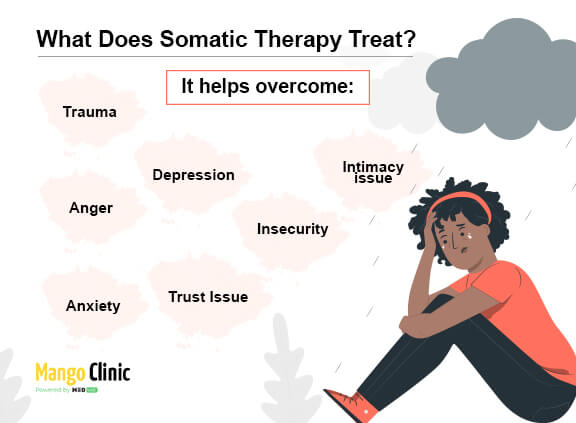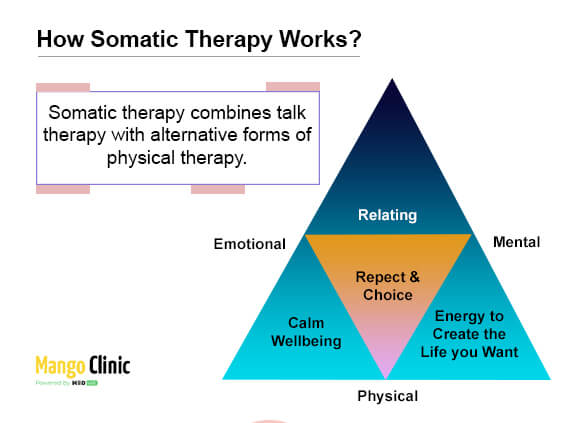Somatic Therapy: All You Need to Know About It

Until recently, medical experts treated the body and mind separately. However, this has changed as medical practitioners develop a new emphasis on the intricate web of the body and mind connection after realizing that, as humans, we store memories, experiences, and emotions on a cellular level. Therefore, events such as traumatic experiences can take a heavy toll on you, not just in the moment. Luckily, somatic Therapy exists to help you relieve the effects of stress, trauma, or anxiety in your body.
A Little History
Before diving into more details on somatic Therapy, it is essential to discern its origin. Dr. Peter Levine, the author of the book Waking the Tiger, pioneered the development and evolution of somatic psychotherapy. His concept was born from observing how wild animals behave in the wake of an attack by predators. In his findings, Dr. Levine established that prey often experienced a bodily release of fight-or-flight energy by running, or sometimes trembling, after which they would subsequently return to their normal behavior.
Dr. Levine believed that we possess the same ability to relieve traumatic stress by releasing physical energy, which is often thwarted by trying to “keep it together” or freeze responses. Dr. Levine validated this theory while in session with a client suffering from PTSD as she began to relive her traumatic experience vividly. After observing her disconcerted state, Dr. Levine advised her to save herself by assuming a predator was after her. The simulated escape triggered a discharge of traumatic energy and provided instantaneous and long-term relief from her PTSD symptoms.
So, What Is Somatic Therapy?
“Somatic” is of Greek origin and is derived from the Greek word “soma,” which means “living body.” Somatic Therapy, as seen above, is distinctive and focuses on restoring your self-regulation by releasing pent-up energy. Somatic psychotherapy is also a holistic therapeutic approach that incorporates your mind, body, spirit, and emotions in the healing process. This unique therapeutic process combines various techniques to give more insight into your thoughts, attitudes, feelings, and beliefs that significantly impact physical functioning. This is essential, especially for trauma victims, as it helps you free yourself from the grips of these events.

According to Sarah Seesly, a New York city-based somatic massage therapy expert, somatic healing is founded on the principle of understanding the relationship between your body and mind, as is the secret to resolving your psychological and physical suffering. While treating some of her high-end clients, Sarah noticed that the physical pain she eased was intimately linked to significant traumatic events that occurred in her clients’ lives. She then discovered the rising field of somatic psychotherapy, where more focus is on what your body expresses and less on what your mind fabricates.
Somatic Therapy Techniques
As mentioned earlier, soma therapy operates off the concept that your life experiences are stored in your mind and your body. Therefore, Somatic therapy techniques help if you are suffering from PTSD, stress, anxiety, depression, and other conditions, since they may affect the functioning of your nervous system. Impairments in the communication between areas of your brain that control sensation and muscles render control of your nerve sensors to the subconscious, making it hard to control muscle comfort and tension. Therefore, the goal of somatic techniques is to drive you closer to fulfilling your innate needs through transformative processes that deepen awareness of your conscious ability.
Some fundamental techniques used in somatic healing include:
Developing Somatic Awareness
Somatic Therapy focuses on educating you on body awareness and cultivating it all around your body. Achieving somatic awareness is a prerequisite to creating change on a cellular level to help release tension. For example, frustration may show up as tightness in your chest, holding your breath, or a pit in your stomach. Understanding these emotions is essential as it equips you with the right tools to deal with various body sensations.
Grounding
Grounding refers to the ability to experience yourself embodied at the moment. This body-based technique involves sensing your physical form, engaging with your senses, and feeling your feet on the earth to help you connect to the world and experience your life fully. Grounding concepts are vital as they help regulate your nervous system when you feel exceedingly triggered.
Self-Regulation
This technique emphasizes the essence of staying connected to your body while experiencing explosive emotions or sensations. With self-regulation, you can develop tools to calm you down and help you respond effectively to intense emotional stress. Living a regulated life also enables you to deeply experience emotions such as love to experience the sweetness of life fully.

Movement
Moving your body can create a powerful feeling of accomplishment, especially if your body is frozen or numbed by experiences. Simple movements such as postures and gestures tap into your capacity to heal from experiences such as intense emotions, past traumas, and insecurities. Somatic movements are performed consciously to focus on your internal experiences rather than the results of the action. Unlike sit-ups or pushups, these movements are all about quality to help you mindfully engage with your impulses to drive a resolution.
Titration
Titration involves the process of slowing down physiological and emotional responses. Experiencing feelings such as fear or anger is expressed in your body through sensations that may leave you feeling frozen, overheated, or completely lost. Therefore, diving into these emotions headfirst subjects you to the risk of overwhelming yourself and retraumatizing your mind and body. Titration ensures you process small levels of distress at a time and helps keep track of your responses and sensations to release stressful energy at a balanced pace.
Sequencing
Sequencing is essential since it offers relief after your body sequences through a traumatic event or emotional experience. Somatic sequencing is often characterized by sensations that move throughout the body. For example, the tension in your belly may move upwards and tighten your chest or throat. This tension may move downwards in some instances, leaving your legs feeling heavy. Sequencing may also trigger other emotional releases, such as crying and trembling as the tension leaves your body.
As seen, Somatic Therapy goes well beyond just treating the mind. As with all therapies, soma therapy is an emotionally difficult and long journey requiring patience and perseverance. Therefore, it is vital to think through your emotional and physical goals and what you want to accomplish through the Therapy. You may choose soma therapy as part of your approach to treatment to improve emotional regulation, address relationship concerns, process grief, decrease symptoms of anxiety or depression, and increase self-confidence.



